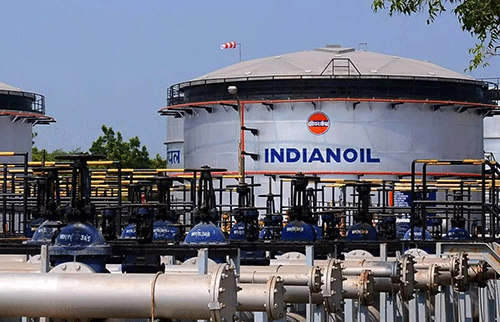International news media have reported that India, the world’s third-biggest oil importer, is eyeing a long-term crude oil supply deal from Namibia, where two of the world’s largest oil finds in recent years have been made. The move, according to sources aware of the development, is part of India’s aggressive energy-sourcing diversification playbook.
The online publication Mint this week reported that India’s plan of charting new geography to meet its energy needs comes against the backdrop of French energy majors TotalEnergies and Shell Plc making ‘giant’ oil discoveries in the Orange Basin off the coast of Namibia.
India has been trying to diversify its energy supplies with Indian Oil Corp recently signing a long-term contract to procure crude oil from Colombia’s state-run Ecopetrol SA and Brazil’s state-run Petroleo Brasileiro SA (Petrobras).
“There has been a huge find in Namibia in February this year…This is a long-term contract that we are looking for, as it sequesters us from the vagaries of the global energy markets,” said a senior Indian government official, one of the two people mentioned above, requesting anonymity.
TotalEnergies is the operator of one of the recent finds with a 40% working interest in Block 2913B that covers around 8,215 square km in Namibia’s deep offshore. The other partners are QatarEnergy (30%), Impact Oil and Gas (20%), and state-run National Petroleum Corporation of Namibia (Namcor) (10%).
With 45% working interest, Shell is the operator of PEL 0039 that covers around 12,000 square km in deep water offshore, and has QatarEnergy (45%) and Namcor (10%) as partners. The Namibian discoveries are estimated to contain recoverable reserves of around 6.5 billion barrels of oil equivalent, according to the research firm Wood Mackenzie.
“The shareholding as quoted by you is correct. However, there are contracts in place as the commercial appraisals of the wells are yet to take place. The project is still at exploratory stage,” stated a Namcor spokesperson in an emailed response.
This comes against the backdrop of a sharp output cut by the Organisation of the Petroleum Exporting Countries (Opec+) of two million barrels per day, amid record-high prices of petroleum products in India and plans of a US-led global coalition to impose a price cap on Russian oil that has sparked a Russian threat to cut oil supplies to any country that becomes a party to the price cap plan.
Meanwhile, a Shell spokesperson said “results from our exploration wells are encouraging, establishing the presence of a working petroleum system with light oil. We’ll continue evaluating the data and conduct further exploration activity to determine the extent of the system, and how much of the hydrocarbons can be recovered. We look forward to continued close collaboration with our partners Namcor, QatarEnergy and the government of Namibia”.
Furthermore, India is a key Asian refining hub, with an installed capacity of more than 249.36 million tonnes per annum (mtpa) through 23 refineries. It plans to grow its refining capacity to 400 mtpa by 2025.
The online publication also reported that Indian state-run firms have increased efforts to acquire equity energy amid an uncertain global energy market. These include an Indian consortium led by ONGC Videsh Ltd, with Indian Oil Corp Ltd, Bharat Petroresources Ltd and Oil India Ltd as members aiming to acquire a stake in a hydrocarbon-producing asset of UAE’s Abu Dhabi National Oil Co.


